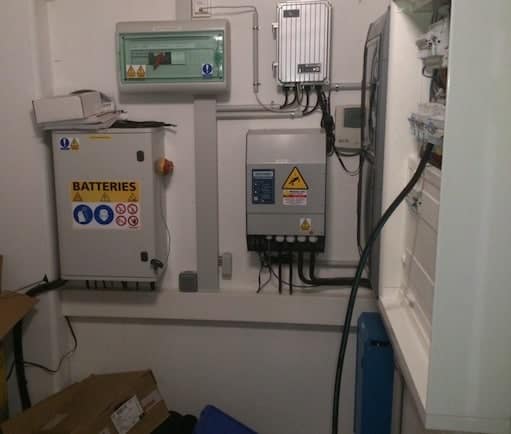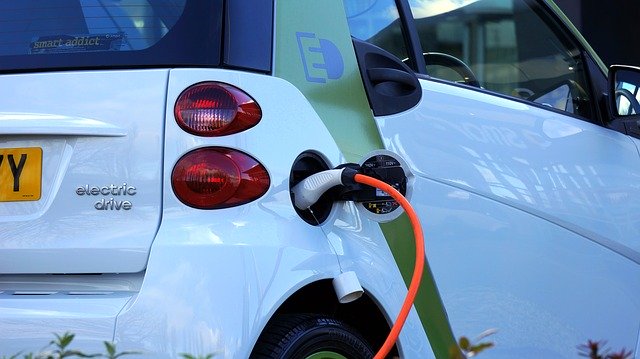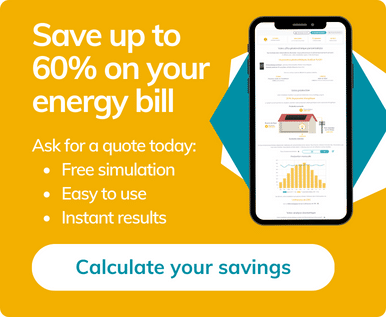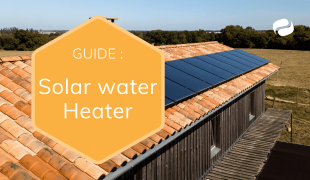We at DualSun want to offer solutions tailored to your situation. That is why we decided to publish an online battery guide to help you make the right choices.
This guide tackles the most basic of questions, such as “Do I really need to invest in batteries?” or “What are the different battery types?” Our aim is to give a more concrete dimension to terms like “battery,” “photovoltaic” or “hybrid solar panel.”
If you still have questions after reading this guide, please feel free to get in touch with our team and they will respond to all of your queries.
—
SUMMARY
- Are solar batteries the right choice for you?
- How do solar batteries work?
- Choosing a battery for your solar installation
- How many batteries for your installation?
- The cost of batteries
- The lifespan of solar batteries
- Recycling solar batteries
- The 2021 battery market and its future trends
Are solar batteries the right choice for you?
Solar batteries are designed to facilitate the use of solar energy.
Like wind energy, solar energy production is erratic because it depends on the amount of sunshine available on a given day. Photovoltaic solar panels generate less energy when the weather is overcast and no energy at all during the night. Energy production levels peak at noon on sunny days.
However, this may not necessarily be the time when you want to use this energy. Many appliances run in the evening or at nighttime.
Although you can certainly program these appliances for daytime operation, you may still be left with a surplus of electrical energy from your solar installation. In this case, you can opt to feed it back into the public grid.
Another solution would be to store the energy into batteries for offline use. This has the added benefit of increasing your energy autonomy as you produce your own energy and keep the surplus at home.
Lastly, if the area you live in is not connected to the standard electric grid, using batteries may turn out to be a very useful way to store solar energy.
How do solar batteries work?
Adding a battery to a photovoltaic solar panel installation is a fairly simple process.
Solar panels generate direct current that must be converted for household use. This is possible with the use of an inverter, a device which converts direct current output into alternating current that can be fed into the domestic electric grid.

The direct current generated by the solar panels is transferred to the solar battery, which is either connected to an inverter or has a directly embedded inverter. When the energy is extracted from the battery, it passes through the inverter to be converted into alternating current fit for domestic use.
The charge and discharge cycles are regulated by an intelligent system known as EMS, or Energy Management System. This system manages many essential functions.
It analyses the energy production and consumption levels of solar panels in order to charge or discharge the battery as necessary.
Additionally, the system guarantees battery longevity by monitoring the battery charge percentage. The EMS is assisted in this task by the BMS (Battery Management System), whose function is to preserve the battery and the security of the installation.
Choosing a battery for your solar installation
Types of batteries
There are plenty of energy storage systems on the market. Each battery type comes with its own set of advantages and disadvantages. Therefore, the choice will depend on the intended use of the battery.
Lithium-ion battery
The lithium-ion battery is the best-known battery type on the market since it can be found everywhere nowadays: in electric cars, smartphones or even laptops.
The manifold advantages associated with the lithium-ion battery include its lack of required maintenance and its good longevity. It is also non-toxic and recyclable.
The primary disadvantage is its high price compared to other energy storage solutions.
Vented lead-acid battery
This battery type runs on lead. It is said to be “vented” because it releases oxygen and hydrogen. This demands that it be placed in a well-ventilated area.
It is quite resistant if properly maintained. Its lifespan exceeds 10 years. However, it is unsealed, very sensitive to cold, and can freeze.
AGM battery
This is a type of lead-acid battery that offers several benefits over a vented lead-acid battery. For one thing, the AGM battery is sealed and therefore does not produce heat. For another, it does not require any maintenance
However, it provides a smaller number of charge and discharge cycles. During use, a battery is subjected to successive charges and discharges in a process known as “cycling.”
Certain battery types can withstand this demand for a shorter or longer time period. From this standpoint, AGM batteries have a relatively weak cycling capacity compared to, say, lithium-ion batteries.
Gel battery
This third type of lead-acid battery is the most successfully developed of them all. Like the aforementioned AGM battery, the gel battery is sealed and does not require any maintenance. It is also frost resistant and has an excellent lifespan.
However, it is still sensitive to excessive charging.
The main technical characteristics
A solar panel installation equipped with solar batteries has specific equipment requirements.
For instance, a car battery cannot be compared to a photovoltaic panel battery, and this is precisely why there are specially-designed batteries for solar panels.
Solar energy charges the batteries sporadically. As such, the charge and discharge cycles are incomplete and the energy can remain in the battery for some time.
In the case of a home-based electrical installation, there should be minimum wastage in order to fully maximize the self-produced energy yield. This means that the batteries must provide an optimum charging capacity, also known as a good charging efficiency.
Here is what we mean by charging efficiency: After a battery has been charged with energy, it would be ideal to make use of all its stored energy and attain a 100% efficiency level. This is unfortunately not the case, because part of the energy dissipates.

Lithium batteries have a charging efficiency of about 90%. In other words, 90% of the previously stored energy is available for use. It is safe to say that they have a good charging efficiency.
The batteries must charge rapidly to ensure efficiency. Afterwards, the energy thus stored must be conserved. This is why a good battery is one that has the lowest possible discharge rate. More specifically, batteries classified as C100 discharge in 100 hours whereas the C5 ones discharge in only 5 hours. This will be discussed in detail in the next section.
The amount of energy a battery can store
Watt hour and Ampere hour
A battery’s capacity to store the energy produced by your solar panel installation is expressed in Watt hours, or Wh.
Just as for the voltage, it is necessary to select a capacity that corresponds to the size of your installation and, most importantly, to the surplus energy it can generate.
Most often, battery capacity is expressed in Ampere hours, or Ah. The storage capacity in Wh can be measured through a simple calculation.
It involves multiplying the voltage by the capacity displayed in Ampere hours. Thus, a 6V and 100Ah battery would have a storage capacity of 600 Wh.
Rate of discharge
Nevertheless, the aforementioned indication of capacity does not suffice. One of your battery’s most important features is its rate of discharge.
No matter the capacity of the battery, what counts is that it does not discharge too quickly.
The discharge capacity is indicated by the following classifications: C5, C20 or C100. The digit refers to the discharge time. For instance, C20 indicates a discharge time of 20 hours.
In concrete terms, the longer the discharge time, the better the effective storage capacity of your battery.
Bear in mind that these discharge times are indicative. Under no circumstances should a battery ever be 100% discharged. A 40 to 50% discharge limit is reasonable.
The best solar energy batteries
Solar batteries are marketed by numerous brands, meaning there are countless options to choose from.
However, selecting the ideal battery will depend on the size of your installation. Therefore, to find your ideal battery you will need to study your situation and identify the specific needs of your installation.
Simulate your solar project now
How many batteries for your installation?
The size of the installation will quite evidently dictate the number of batteries required. There are two things to keep in mind when deciding on the number of batteries you will install:
- their charging rate will vary
- the batteries must never be completely discharged
As a result, you must arrange for an appropriate margin to ensure the efficiency of the energy storage system.
To calculate the number of batteries needed, you must also consider the possible isolation of your installation or, on the contrary, its integration into the standard electrical network.
In other words, do you necessarily need to set aside a certain number of days for your autonomous personal consumption? If that is the case, you will have to calculate the output of your installation as well as you daily energy needs in order to establish your energy storage requirements.
The cost of batteries
Battery prices
The price of your batteries will depend on all of the aforementioned characteristics as well as the brand you opt for.
However, to cite an example: a 10 kWh lithium-ion battery costs between €6,000 and €10,000 euros including taxes. Bear in mind that this is just an estimate to give you an idea of the price.
Are batteries a valuable investment?
The cost of installing the batteries is relatively high. Therefore, investing in batteries is a personal choice and one that may be dictated by your geographical location more so than an act of considerable financial self-interest. Financially speaking, installing batteries is expensive no matter the circumstances.
Do you live in a remote location? Do you want to ensure uninterruptible power supply in case of power outages from the public grid? Do you need to recharge your electric car?
Answering these types of questions will help you figure out if investing in a fleet of batteries is right for you.
Visit a solar installation with batteries
The lifespan of solar batteries
Household batteries retain at least 70% of their initial capacity after 10 years of use. This is why they generally come with a 10-year warranty.
Ultimately, the lifespan of a battery depends on its use. The greater the number of charges and discharges, the shorter the life span.
Additionally, you must take the battery’s depth of discharge into account and, above all, never perform a deep discharge. The battery would be irreversibly damaged should this occur. With this in mind, you may want to install a solar controller to optimize the battery’s charge.
Also worth noting is that good maintenance of household batteries will increase their lifespan— as will protecting them from very high temperatures or frost.
Recycling solar batteries
Recycling is an important factor to consider when purchasing batteries. In fact, one of the benefits of renewable energies is their positive impact on climate change. Good recycling systems optimize the impact of this effort.
The battery recycling rate differs according to the types of batteries used. For instance, lead-acid batteries are difficult to recycle. Solar lithium batteries, on the other hand, have a recycling rate of 70%.
To recycle the batteries, simply bring them to a collection point where they will be received and recycled by professionals.
The 2021 battery market and its future trends
The current market
The market for electric batteries is booming. The accelerating popularity of electric cars and renewable energy is the main driving force behind it.
Chinese companies are at the top of this particular market even though the American company Tesla is attempting a large-scale development of its battery factories.
The vision for the future rests on two pillars: the expansion of smart grids and the creation of batteries that are less polluting than lithium batteries.
Smart energy storage without batteries
The output of a battery-free solar installation can come close to that of a battery-containing installation if consumption is optimized.
Smart grids
A smart grid is an electricity network based on digital technology that is comparable with the 5G technology of mobile communication. The imminent arrival of 5G carries the promise of high-speed connectivity in virtually any place and at any time.

The purpose of these smart grids is to transfer energy where it is needed in real time. Together with the progress of 5G, these networks will enable extremely rapid, real-time energetic transfers.
Electricity networks will be able to use weather forecasts to optimize the production and storage of renewable energies. The home automation tools we use today function in much the same way: they allow us to program and run our household appliances during optimal yield periods.
To put it another way, energy retention and redistribution is not limited to batteries, but can also be harnessed by an optimized network. Energy can be contained in biogas, pumping stations, and also flywheels, and then be redistributed on demand.
Batteries of the future
Batteries will nevertheless continue their technological evolution. As such, salt, zinc-air or rhubarb batteries may well end up replacing household lithium batteries.
The same applies to cars equipped with hydrogen fuel cells, which represent an attractive alternative to today’s electric cars.
Therefore, research continuously strives to discover methods that are less demanding in water or rare materials.
Batteries and DualSun solar panels
We hope that this guide has brought you some elements of reflection to help you get a better idea about batteries.
If this is an option you are willing to try, please note that DualSun hybrid solar panels are compatible with all battery types, giving you the liberty to choose the most suitable battery for your individual circumstances.
For further reading, we recommend: The environmental impact of solar panels





Aucun commentaire.
Leave a comment
Votre adresse e-mail ne sera pas publiée. Les champs obligatoires sont indiqués avec *